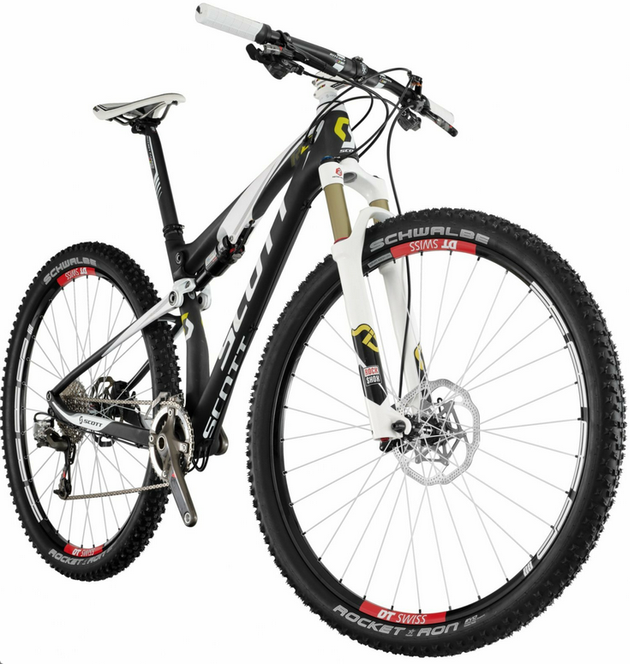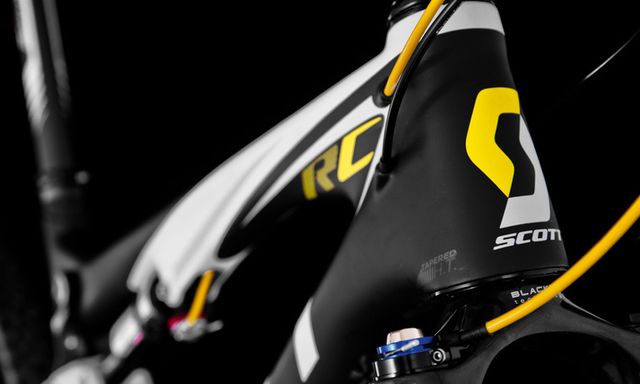
Since 2011, when Specialized unveiled its Epic 29er, which became the benchmark for cross-country 29ers by notching the first big-wheeled wins on the World Cup circuit, the other major brands have been playing catch-up. To that end, this year has been a good one for consumers with the launch of the impressive Cannondale Scalpel 29er, a finely honed redesign of the Trek Superfly 100, and a handful of other lower-profile but no less interesting models (think GT鈥檚 Zaskar 100). With the Spark 29er, Scott made a long overdue and respectable entrance into the fray.
This bike was perhaps the one we anticipated most in this genre because it had the potential to marry the lightweight agility of its with the convenient three-stage suspension design that we loved on the Genius LT. After half a year riding the bike, we鈥檙e happy to report that the 2012 Spark 29er achieved that balance and more. And though it鈥檚 not without a few shortcomings, this bike comfortably keeps up with鈥攖hough doesn鈥檛 outpace鈥攖he host of options in this class.
THE FRAME
Based on the initial Spark, which was unprecedentedly light (20.6 pounds) when it hit five years ago, the Spark 29er was bound to be a featherweight, and Scott didn鈥檛 disappoint. Our size medium tester tipped the scales at a competitive 23.3 pounds, and given the stout wheels (more on that in a minute) the frame alone must be truly willowy. That's because this RC model (short for Race Concept) is built from Scott's top-shelf HMX carbon fiber blend, including an almost fully carbon rear triangle. And there are no tricky weight-saving shortcuts here, either, as the bike gets all the modern livery: tapered head tube, a wide press-fit BB92 bottom bracket, internal cable routings (derailleurs cables only), a direct-mount front derailleur, and post mounts for the rear brake.
What's most interesting about the frame is the integration of Scott's TwinLoc concept, which uses a bar-mount lever to adjust the Spark's range of travel, both front and rear with a single adjuster. In Open Mode, the bike gets a full 100mm of travel; in Traction Mode, it damps down to 70mm (with the fork staying fully active); and in Lock Mode both front and rear end go impressively rigid. It's not only the travel that changes, either. When the suspension is active, the bottom bracket sags and the head angle slackens for downhill stability; when locked, the head tube is steeper and the bottom bracket higher for better clearance and climbing efficiency. And for those who want even more control, the frame has a built-in chip that tweaks the geometry another 0.5 degrees.

That might sound complicated, but what we love about it is, in fact, the simplicity. By integrating both front and rear suspension and putting the control on the bars, Scott ensures that you won't be reaching down and fiddling with dials and switches on the bike when you should really be focused on negotiating the trail. Brilliant! It's the smartest system out there, short of Specialized's Brain, perhaps, which lets the suspension decide whether to activate or not so you don't have to. Then again, some riders will prefer the control, as well as the more active feel, that the TwinLoc affords.
And it really works. On pavement and fire roads, the Spark 29 was admirably stiff and efficient鈥攁s close to fully rigid as any full suspension we've tried. For climbing, we could drop it to Traction Mode, and the bike gripped the trail and hooked up amazingly well, even in loose and gravelly conditions. And on the descents, the Open Mode was, indeed, fully active. Worth noting: While the Spark 29 is relatively cushy for a race bike, negotiating tight quarters and moderately rocky and technical trails quite easily, the suspension definitely gets a little overwhelmed in the chunky stuff. That's the case for most four-inch bikes, but perhaps because of the Spark's gossamer frame, a few testers remarked about being pinged around when the trails got tough.
THE PARTS
As expected on a high-end race bike, components are (mostly) light and pricey, including a full SRAM XX groupset and choice Ritchey cockpit hardware (some of our favorites!). In terms of performance, the only disappointment were the Avid XX World Cup brakes, which have a mushy quality that we have never grown to love and required several bleeds throughout the test process. Though they weigh a bit more, we'd much rather have Avid's XO model鈥攐r even more preferably, Shimano XTR or XT鈥攚hich feel better and are much more consistent in our experience.
Front suspension duties go to the new Rock Shox SID 29 fork, which is impressively plush for how light it is and suits the overall gestalt of the bike. Most testers were pleased with this new fork, though a few of the bigger guys found it a touch flexy. It's a shame, though, that Scott opted for a standard QR model instead of a thru-axle, which would have really stiffened up the front end and sharpend the steering with little weight penalty.
The other notable misstep is the choice of wheels, a made-to-order hoop called the DT Swiss XR-RS29, which, according to DT, are virtually the same as the company's M1800s. Our complaint wasn't with the wheels' performance鈥攖hey worked fine and were, in fact, quite stiff. But for a race bike of this caliber, they're too burly. That the Spark 29 is able to hit 23 pounds with these wheels is impressive. If it came with truly race-ready hoops, the bike could easily drop a pound or more. We suspect the choice had as much to do with cost as anything, so in the sense that the Spark 29 is significantly cheaper than other bikes in its class (like the top-end Epic, Superfly, and Scalpel), we can understand the compromise. Racers, however, will likely prefer to swap out hoops.
THE BOTTOM LINE
That might sound like a lot of complaints for such an expensive bike, but really it's mostly nitpicking. Stepping back and taking the Spark 29 as a whole, we have to admit that it rode great and met most of our high expectations. Scott's TwinLoc system is a stroke of genius, and we wish that more companies would follow suit and put full suspension control on the handlebars. And even with all the niggles, the Spark 29 is a blazing fast racer that pits comfortably up against anything else in this category.
Beyond performance, the bike has a major leg up on the competition: At $6,500, the Spark 29 RC is between one and four thousand dollars cheaper than its nearest rival. As such, it might just be the best deal going in a full-fledged race 29er. That alone is reason enough to put the Spark atop any list of potentials, though if you do purchase it, we're confident you'll be as impressed by the ride as by the price.
鈥擜aron Gulley